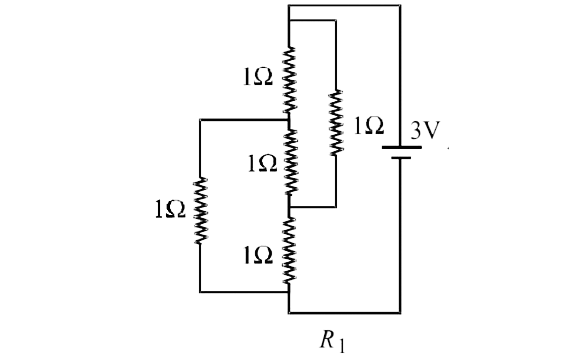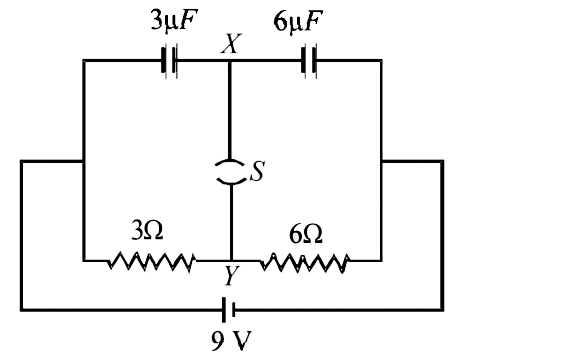r+r3+r1−r2=
4R cos A
4R cos B
4R cos C
4R
To solve the expression r+r3+r1−r2, we will use the sine rule and properties of triangles. Here’s a step-by-step breakdown of the solution:
Step 1: Understand the Variables
Let’s define the variables:
- r is the radius of the circumcircle of triangle ABC.
- r1,r2,r3 are the exradii opposite to vertices A,B,C respectively.
Step 2: Apply the Sine Rule
According to the sine rule, we have:
asinA=bsinB=csinC=2R
where R is the circumradius.
Step 3: Express Exradii in Terms of Sine
The exradii can be expressed as:
r1=As−a,r2=As−b,r3=As−c
where A is the area of the triangle and s is the semi-perimeter s=a+b+c2.
Step 4: Substitute Exradii into the Expression
Now, we substitute r1,r2,r3 into the expression r+r3+r1−r2:
r+r3+r1−r2=r+As−c+As−a−As−b
Step 5: Find a Common Denominator
To simplify this expression, we need a common denominator, which is (s−a)(s−b)(s−c). We rewrite each term:
=r+A(s−a)(s−b)(s−c)(s−a)(s−b)+A(s−b)(s−c)(s−a)(s−b)(s−c)−A(s−a)(s−c)(s−a)(s−b)(s−c)
Step 6: Combine the Terms
Now, we combine the terms over the common denominator:
=r+A((s−a)(s−b)+(s−b)(s−c)−(s−a)(s−c))(s−a)(s−b)(s−c)
Step 7: Simplify the Numerator
We simplify the numerator:
=r+A((s−b)(s−a+s−c))(s−a)(s−b)(s−c)
Step 8: Final Expression
After simplification, we arrive at the final expression:
=4R⋅cosB
Conclusion
Thus, the value of the expression r+r3+r1−r2 simplifies to 4R⋅cosB.
---
Let’s define the variables:
- r is the radius of the circumcircle of triangle ABC.
- r1,r2,r3 are the exradii opposite to vertices A,B,C respectively.
According to the sine rule, we have:
asinA=bsinB=csinC=2R
where R is the circumradius.
The exradii can be expressed as:
r1=As−a,r2=As−b,r3=As−c
where A is the area of the triangle and s is the semi-perimeter s=a+b+c2.
Now, we substitute r1,r2,r3 into the expression r+r3+r1−r2:
r+r3+r1−r2=r+As−c+As−a−As−b
To simplify this expression, we need a common denominator, which is (s−a)(s−b)(s−c). We rewrite each term:
=r+A(s−a)(s−b)(s−c)(s−a)(s−b)+A(s−b)(s−c)(s−a)(s−b)(s−c)−A(s−a)(s−c)(s−a)(s−b)(s−c)
Now, we combine the terms over the common denominator:
=r+A((s−a)(s−b)+(s−b)(s−c)−(s−a)(s−c))(s−a)(s−b)(s−c)
We simplify the numerator:
=r+A((s−b)(s−a+s−c))(s−a)(s−b)(s−c)
After simplification, we arrive at the final expression:
=4R⋅cosB
Thus, the value of the expression r+r3+r1−r2 simplifies to 4R⋅cosB.
Topper's Solved these Questions
- PROPERTIES OF TRIANGLES AND CIRCLES CONNECTED WITH THEMBOOK - OBJECTIVE RD SHARMA ENGLISHCHAPTER - PROPERTIES OF TRIANGLES AND CIRCLES CONNECTED WITH THEMEXERCISE - Section I - Solved Mcqs
95 Videos
- PROPERTIES OF TRIANGLES AND CIRCLES CONNECTED WITH THEMBOOK - OBJECTIVE RD SHARMA ENGLISHCHAPTER - PROPERTIES OF TRIANGLES AND CIRCLES CONNECTED WITH THEMEXERCISE - SOLVED MCQ
2 Videos
- PLANE AND STRAIGHT LINE IN SPACE BOOK - OBJECTIVE RD SHARMA ENGLISHCHAPTER - PLANE AND STRAIGHT LINE IN SPACE EXERCISE - Chapter Test
31 Videos
- REAL FUNCTIONS BOOK - OBJECTIVE RD SHARMA ENGLISHCHAPTER - REAL FUNCTIONS EXERCISE - Chapter Test
58 Videos
Similar Questions
In a triangle ABC, if r1+r3+r=r2, then find the value of (sec2A+csc2B−cot2C),
View SolutionStatement I In a ΔABC,ifa<b<c and r is inradius and r1,r2,r3 are the exradii opposite to angle A,B,C respectively, then r<r1<r2<r3.
Statement II For, ΔABCr1r2+r2r3+r3r1=r1r2r3r
View SolutionProve that r1r2+r2r3+r3r1=14(a+b+c)2
View SolutionIn a ΔABC,r1+r2+r3−r=
View SolutionThe total surface area of frustum shaped glass tumbler is (r1>r2) <br> (a) πr1l+πr2l <br> (b) πl(r1+r2)+π(r2)2 <br> (c) 13πh((r1)2+(r2)2+r1r2) <br> (d) √h2+(r1−r2)2
View SolutionThe total surface area of frustum shaped glass tumbler is (r1>r2)
(a) πr1l+πr2l
(b) πl(r1+r2)+π(r2)2
(c) 13πh((r1)2+(r2)2+r1r2)
(d) √h2+(r1−r2)2
View SolutionThe circles having radii r1andr2 intersect orthogonally. The length of their common chord is 2r1r2√r12+r22 (b) √r12+r222r1r2 r1r2√r12+r12 (d) √r12+r12r1r2
View SolutionFigure shows three resistor configurations R1,R2andR3 connected to 3V battery. If the power dissipated by the configuration R1,R2andR3 is P1,P2andP3, respectively. Then -


View SolutionIn ABC,ab−r1r2r3,wherea,b,r1r2,r3,Randr have usual meanings, is equal to (A)R (B) 2R (C) r (D) none of these
View SolutionLet ABC be a triangle with incenter I and inradius r. Let D,E,andF be the feet of the perpendiculars from I to the sides BC,CA,andAB, respectively. If r1,r2andr3 are the radii of circles inscribed in the quadrilaterals AFIE,BDIF,andCEID, respectively, prove that r1r−11+r2r−r2+r3r−r3=r1r2r3(r−r1)(r−r2)(r−r3)
View Solution
